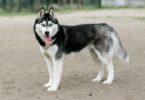And suppose the ideal family pet was a furry ball of smiles that was smart and cute? Making hearts across the country melt is the Poochon, a mix between the Bichon Frise and Poodle. A Bichpoo, or a Bichpoo, is a hybrid dog that combines the finest features of its parent breeds and creates a faithful companion that fits in a contemporary family.
These dogs were initially bred in the 1990s in Australia to have the low-shedding coat and a playful character. They look like teddy-bears and are flexible enough to live in apartments or family houses. However, what really makes them special is their hypoallergenic fur and intelligence, the qualities which they have inherited after their Poodle ancestors.
This handbook explores all you should know about it: grooming, health and more. You will learn why their loving nature works well in a social environment and how their small size is ideal in the city. As a new owner or adding to your furry family, knowing the needs of this breed will make a happy and healthy pet.
Are you ready to find out why the Poochon is one of the favorite hybrids in America? Let’s uncover the facts behind their rising popularity.
Overview of the bichon poodle mix Breed
Think about a pet that is as smart as a scholar, and as cuddly as a stuffed animal. This mix is the brightest representative of the breed of designer dogs created to provide companionship uncompromised. It is 6-17 pounds and less than 15 inches tall, making it compact enough to fit into an urban apartment or a suburban home.
What makes this breed a star in family settings? Its curly and soft coat has a dual purpose that not only provides hypoallergenic properties but also needs to be brushed weekly to avoid tangles. These lovelies do not bark too much like most small breeds, and instead prefer to shower their owners with nudges and playfulness.
Families adore their adaptable nature. Although they can live with busy professionals or retirees, these dogs love being around people. They are intelligent and quick learners especially during training sessions and are obedient in their tasks. By nature, they are social and form strong bonds with children and get along with other pets.
For allergy sufferers, their low-shedding fur is a game-changer. Together with an outgoing personality, it is not surprising that they have made their way to the top popular hybrid breeds list. This hybrid is evidence that good things can come in small hypoallergenic packages.
History and Origins
There is always a story of two pedigrees behind every good hybrid. The bichon poodle mix has a pedigree of noble parents–one of European nobility, the other of German utility. The history of this crossbreed starts with the fact that Australian breeders crossed these breeds in the late 1990s and were hoping to obtain a low shedding pet with intelligence and personality.
Bichon Frise Heritage
The bichon frise originated in the Canary Islands in Tenerife and followed the Spanish sailors to the mainland in Europe. These powder-puff dogs were favorites of Italian and French nobility by the Renaissance. Their intelligence proved to be circus-worthy later in life when they became the star performers after the French Revolution and gave performances by tricks and agility.
Poodle Ancestry
The poodle of Germany has an unbelievable history of being a good duck hunter. They were perfect retrievers due to their curly coat that is water-resistant and athletic body. Eventually, smaller toy and miniature poodle strains were bred and the breed moved out of the marshes and into palaces as lapdogs of the 18th-century elite.
The breeders of today deliberately cross-bred these breeds to focus more on family-friendly characteristics. Studies show the hypoallergenic coat and keen mind of the hybrid are direct offshoots of the strengths of the parent breeds a match made in heaven, the royal elegance of the Poodle and the practicality of the working dog.
Physical Appearance and Size
Visual charm meets practical design in this hybrid's appearance. Their signature feature—a plush, curly coat—combines softness with functionality. This thick fur is in tight spirals that do not shed easily and make the dog a perfect fit in an allergy-prone house.
Coat Type and Color Variations
The coat is loose waves to springy corkscrews, and needs brushing weekly to avoid mats. Typical colorations are creamy white, warm apricot and rich ruby red. The apricot colors tend to fade into soft peach as the dog grows and this creates a sun-kissed look.
Size, Weight, and Build
They are 9-15 inches tall and weigh 6-17 pounds, which makes their compact size perfect to sit in laps and playtime. The ancestry of toy poodles results in smaller dogs (9-12 inches) whereas miniature ancestry results in sturdier builds (13-15 inches). Although they are small, they have muscular legs that allow them to be surprisingly nimble during games of fetch.
The hypoallergenic nature of this breed is due to the tight curling of fur which entraps dander. Adding to their flexible size, it enables them to be suitable pets in apartments or houses in the city or suburbs. Their big expressive eyes and roundish features perfect the teddy-bear look that owners love.
Temperament and Personality Traits
The personality of a dog influences all the interactions, and the temper of this hybrid makes it an outstanding companion. The combination of playfulness and emotional intelligence makes it a pet that understands the routine of the home and keeps morale up.
Family-Friendly and Affectionate
These pocket pets do well in a household where love abounds. They are docile in their nature and are usually found around children trying to get laps to cuddle or play a little. They are social in nature and they fit into apartment life or households of many people without skipping a beat.
Owners complain that their pets follow members of the family around the house. This faithfulness is a result of an inherent desire to be a companion- be it cuddling up on movie nights or wagging their tails excitedly to welcome visitors.
Intelligence and Trainability
The poodle heritage endows the animals with the ability to solve problems that startles first-time owners. With positive reinforcement, they learn simple commands in 3-5 repetitions. Their obedience drills and puzzle toys keep their sharp minds occupied.
Socialization at an early age enables them to be comfortable with strangers and pets. They are eager to please so housebreaking is easier than with most breeds. They respond best to treat-based rewards, because they are sensitive and harsh corrections may suppress their temperament.
Health Considerations and Common Issues
Each dog breed has certain health risks and hybrid dogs receive the properties of both lines. Being generally healthy, this crossbreed might have inherited conditions that need proactive treatment. Understanding these problems at an early stage assists owners to preserve the quality of life of their pet.
Genetic Predispositions and Disease Risks
Research indicates that one out of five small dogs has patellar luxation-a displacement of the kneecap that leads to limping. By the age of three, more than 80 percent of toy breeds experience dental disease because of crowded teeth. Hereditary eye problems such as cataracts are seen in 15 percent of the cases and may need surgery.
Bladder stones occur in 12% of these hybrids, and are associated with genetics and diet. Poodle ancestry skin allergies are manifested through too much scratching or ear infections. Vet screenings are useful to detect such issues early enough before they become serious.
Preventative Health Care Tips
Three times a week, brushing your teeth diminishes the risk of periodontal disease by 60%. Addison disease is a hormonal imbalance that is monitored annually by blood test in some lines. Keep nails trimmed to prevent joint stress during walks.
Provide premium quality kibble that is designed to promote urinary health in small breeds. Be on the lookout of symptoms such as cloudy eyes or unwillingness to jump- the earlier the better the treatment. Work with your vet to develop a personalized wellness program that considers breed-specific risks.
Grooming and Maintenance Essentials
A hypoallergenic coat needs more than just some care here and there, it needs a plan of care. The owners have to strike a balance between home care and professional knowledge to ensure that their companion is in good shape and in good looks. Three areas should be given attention: fur management, dental hygiene and ear care.
Coat Care and Regular Grooming
Brushing with slicker brush everyday does not allow the curly fur to form mats. Use cornstarch on knotty tangles and then work them out. Professional groomers suggest every four to six weeks to have the dog trimmed to keep the shape and airflow around the skin.
Natural oils are preserved by bathing 4-8 weeks with hypoallergenic shampoo. Such brands as Earthbath or TropiClean are suitable when the skin is sensitive. Always dry thoroughly to avoid moisture-related rashes.
Dental and Ear Health
Brush teeth three times weekly using enzymatic toothpaste. Plaque accumulation between cleanings is minimized with dental chews such as Greenies. Visually inspect ears once a week to see signs of redness or odor- which are signs of infections.
Trim ear hair monthly to improve airflow. Use vet-approved solutions like Zymox for cleaning. These steps should be accompanied by omega-rich diets in order to boost skin and coat health internally.
Exercise Needs and Energy Levels
Size does not equal energy–this energetic cross likes to be on the move with a purpose. Although these dogs weigh less than 20 pounds, they need 60 minutes of daily exercise to remain physically and mentally balanced. They are intelligent and require more than mere walks, and they incorporate physical activity with games that involve problem solving.
Daily Walks and Playtime
Divide exercise into two 20-minute walks together with interactive sessions. Treat dispensing puzzle feeders stimulate their brilliant minds at mealtime. Indoor fetching up and down corridors or stair-climbing exercises are effective in the apartment.
Outdoorsmen may find hiking paths or shallow swimming areas. Watch water activities all the time- their curly coats absorb water and they must be dried well after that. To avoid joint strain, puppies have to have five-minute play sessions multiplied by the number of months they have.
They are flexible with urban living and have the advantage of sniffing walks in which they venture new paths. This stimulates their senses while burning energy. Socialization in dog parks is possible, however, do not go during peak hours when your pet exhibits signs of stress.
Regular activities minimize anxiety behaviors such as excessive licking or chewing- which are major stimulants of skin allergies. Adjust the intensity to the age of your dog: the elderly can enjoy soft nosework activities, whereas the adolescents can perform well in agility courses. Always consult your vet before starting new fitness regimens.
Nutrition and Feeding Guidelines
What is the source of endless energy of a small dog and the shine of its coat? All the difference is made by proper nutrition, which should be adjusted to their individual metabolism. Small breeds need nutrient-rich and high-energy foods that will sustain them through their active lives and avoid weight gain.
Selecting Quality Meals
Begin by looking at AAFCO labels- this means that it is balanced nutrition. Choose foods that have real animal protein (chicken, salmon) as the first ingredient. Avoid empty-calorie fillers such as corn or soy.
Small dogs expend energy fast and their stomach capacity is small. Seek kibble that is made to fit small jaws and has glucosamine added to it to support joints. Growing puppies can be given formulas with 22-32 percent protein, but seniors should be given formulas with fewer calories.
Portion control prevents obesity—a common issue in petite breeds. Weigh food on a kitchen scale to be precise. Treats shouldn’t exceed 10% of daily calories. Try freezing blueberries or carrot sticks for guilt-free snacks.
Talk to your vet to change the portion sizes depending on the activity level and health status. Annual bloodwork helps spot dietary deficiencies early. Remember: quality food today means fewer vet bills tomorrow.
Behavioral Training and Socialization
What is the difference between a polite pet and a wild bundle of fun? Orderly training and early socialization are what turn inborn intelligence into predictable behavior. Their rapid learning process comes out well with the help of regular routines that create trust and confidence.
Effective Obedience Training Techniques
Clicker training is a miracle in marking the wanted behaviors such as sitting calmly or walking politely. Combine the sound of the click with food rewards as soon as possible to encourage positive behaviors. Crate training creates a secure place to retreat and learn impulse control- close the door in small periods during meals to lessen the separation anxiety.
Begin with 5-minute sessions three times a day and concentrate on a single command such as sit or stay with puppies. Rotate tasks weekly to prevent boredom. In the case of leash manners, stop when you feel tension- continue only when the leash is slack. Reward loose-leash walking with high-value snacks like chicken bits.
Managing Barking and Behavior Challenges
Fear-based barking is avoided by early exposure to diverse sounds and crowds. Wait until there is natural silence and then reward and treat immediately by introducing quiet commands. Redirecting the urge to chew by using the leave it cue and a swap with approved toys.
Puppies should be socialized within the first 16 weeks by scheduling playdates with vaccinated dogs. Exercise and train the paws and ears every day to reduce the stress of grooming. With problems that take time to stop such as jumping, teach off by turning away until all paws are on the floor- consistency among family members is vital.
Attention-seeking behaviors are alleviated when the mind is stimulated using puzzle feeders or scent games. Keep in mind: the key to building long-lasting relationships is patience and positivity that will make perfect canine citizens.
Finding a Responsible Breeder
How do you separate trustworthy professionals from backyard operations? Ethical breeders are committed to the welfare of canines and not profits. Begin by checking credentials with such organizations as the Orthopedic Foundation for Animals (OFA), which monitors health testing of breeding stock.
Key Questions for Prospective Breeders
Ask breeders these critical questions during initial consultations:
- Can I review health certifications for both parent dogs? Look for hip X-rays, genetic screenings, and eye exams.
- What socialization practices do you use for puppies? Litters in ethical programs are exposed to different sounds, surfaces and handling prior to adoption.
- Do you offer a health guarantee? Genetic conditions ought to be covered by contracts at least two years and with a return policy.
Health Testing and Ethical Practices
Top breeders exceed basic requirements. They will also be open to tours of the facilities to demonstrate clean living areas and to present the mother dog. Avoid breeders of teacup size or odd colors- these are usually indicative of a profit-seeking operation.
Such sites as Good Dog rate breeders based on five pillars: health testing, quality of housing, and buyer education. Prepare to know about the lineage and after-adoption assistance in training or health issues. Real professionals are interested in the life of their puppies even after their adoption.
Final Thoughts on Your Bichon Poodle Mix Journey
The correct selection of the right companion matches lifestyle requirements with the special qualities of a pet. The history of this breed as a friendly, flexible companion is reflected in its hypoallergenic fur and extreme intelligence. Families get a faithful companion that lives very well in apartments or homes, as long as they have their grooming and exercise requirements.
Brushing weekly and professional trims will keep that famous fluffy look. Walking every day and puzzle games keep the body and mind in shape. And keep in mind, proper nutrition and training as a young animal sets the stage of a well-adjusted pet.
Health certifications and visits to the facilities should always be used to verify the credentials of breeders. Responsible breeding eliminates hereditary problems and makes sure that puppies are well socialized. It is a nifty solution to space-constrained allergy sufferers, without sacrificing affection.
Potential owners must evaluate their ability to provide these care needs in the long run. Prepared and informed, you will not only get a pet but a happy companion that will be eager to make each day brighter.
FAQ
Are Bichon Poodle mixes hypoallergenic?
Although no dog can be considered completely hypoallergenic, the low-shedding coat of this crossbreed yields less dander, making it a more suitable choice to allergy sufferers. Regular grooming further reduces allergens.
How long do these dogs typically live?
With proper care, they often live 12–15 years. Their longevity is determined by genetics, nutrition and proactive healthcare to deal with some of the common problems such as joint problems or allergies.
Do they require professional grooming?
Indeed, their wavy or curly coat requires a trim after 4-6 weeks to avoid matting. Between salon visits, it is necessary to brush the home 3-4 times a week.
Are they suitable for apartment living?
Absolutely. They are small (10-15 pounds) and moderate energy that can fit in smaller places as long as they receive daily walks and some interactive play.










Leave a Comment